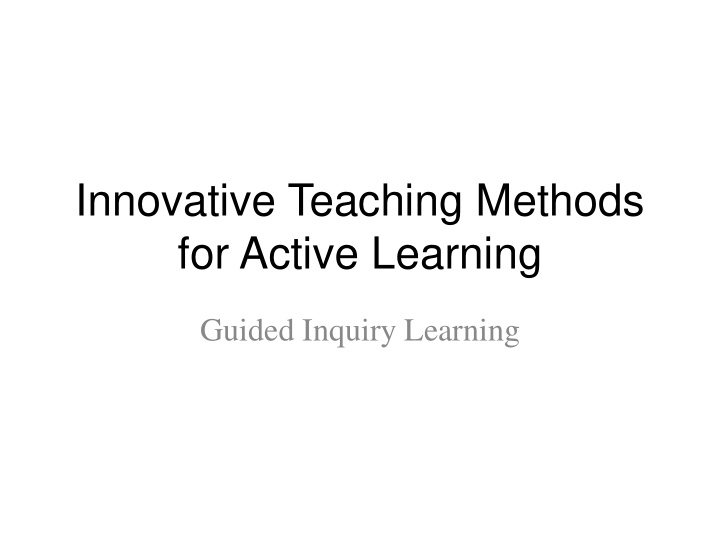



Innovative Teaching Methods for Active Learning Guided Inquiry Learning
The POGIL Project • Process Oriented, Guided Inquiry Learning • Developed in college Chemistry classrooms (1994), has since expanded to other fields and into high school level – Analytical chemistry, anatomy and physiology, biology, biochemistry, computer science, engineering, math, physical chemistry, etc – Supported through NSF grants • Active learning is structured within POGIL activities that the students work through
Process Oriented • Process skills are a part of the complete POGIL package • Active learning activities are done in groups • Students are assigned roles within the group: Manager, recorder, presenter/spokesperson, reflector/analyst • Teams are self-managed; instructor is a facilitator • Process skills are imbedded in the activities, not necessarily dependent on the facilitation
Guided Inquiry Learning • An exploration of the relevant content • Emphasis on the Learning Cycle – Exploration – Concept invention/Term introduction – Application • Structured around a Model – Guided exploration of the model by questions aimed at developing a concept – Application of this concept to advanced question – Also can deepen, refine or integrate previous material and/or concepts
The Model • The students are expected to explore or study the model • Could be data, equations, diagrams, text, graphics, processes, hands-on activities • Expected to articulate and record explanations • Activities are structured toward a central idea
• How many protons/ neutrons /electrons found in 12 C? 13 C? 13 C - ? • With your group decide what feature distinguishes a neutral atom from an ion. • What do you think all carbon/ hydrogen atoms and ions have in common? • How many protons, neutrons and electrons are there in one atom of 1 H + ? • What do all nickel (Ni) atoms have in common?
Phase change investigation • Model is illustrations of a mass of water in a piston:
Phase change investigation • Students calculate specific volume for each state point and plot temperature vs. volume • Vapor quality is introduced in questions
Carnot cycle investigation • Incomplete computer model of a Carnot cycle is provided, with diagram window that takes inputs and outputs • Students complete the computer model and questions require progressive understanding
Scientific method • Lots of times we teach science without using the scientific method • Use of Guided Inquiry and the Learning Cycle more closely mimics the scientific method in the classroom
Recommend
More recommend